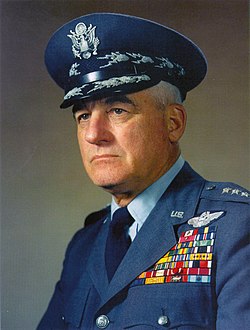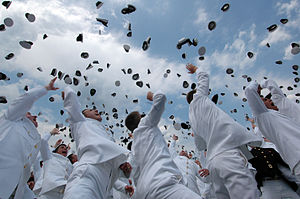Uniform

A uniform is a set of standard clothing worn by members of an organization while participating in that organization's activity. Modern uniforms are worn by armed forces and paramilitary organizations such as police, emergency services, security guards, in some workplaces and schools and by inmates in prisons. In some countries, some other officials also wear uniforms in their duties; such is the case of the Commissioned Corps of the United States Public Health Service or the French prefects. For some public groups, such as police, it is illegal for non members to wear the uniform. Other uniforms are trade dressed (such as the brown uniforms of UPS).
Service and work uniforms
Workers sometimes wear uniforms or corporate clothing of one nature or another. Workers required to wear a uniform include retailer workers, bank and post office workers, public security and health care workers, blue collar employees, personal trainers in health clubs, instructors in summer camps, lifeguards, janitors, public transit employees, towing and truck drivers, airline employees and holiday operators, and bar, restaurant and hotel employees. The use of uniforms by these organizations is often an effort in branding and developing a standard corporate image but also has important effects on the employees required to wear the uniform. However the term 'uniform' is misleading because employees are not always fully uniform in appearance and may not always wear attire provided by the organization, while still representing the organization in their attire. Academic work on organizational dress by Rafaeli & Pratt (1993) referred to uniformity (homogeneity) of dress as one dimension, and conspicuousness as a second. Employees all wearing black, for example, may appear conspicuous and thus represent the organization even though their attire is uniform only in the color of their appearance not in its features. Pratt & Rafaeli, (1997)described struggles between employees and management about organizational dress as struggles about deeper meanings and identities that dress represents. And Pratt & Rafaeli (2001) described dress as one of the larger set of symbols and artifacts in organizations which coalesce into a communication grammar.
- Rafaeli, A. & Pratt, M. J. 1993. Tailored meaning: On the meaning and impact of organizational dress. Academy of Management Review, 18(1): 32-55.
- Pratt, M. & Rafaeli, A. 1997. Organizational dress as a symbol of multilayered social identities. Academy of Management Journal, 40(4): 862-898.
- Pratt, M. G. & Rafaeli, A. 2001. Symbols as a language of organizational relationships. Research in Organizational Behavior, 23: 93-13

Schools
Uniforms are required in many schools. School uniforms vary from a standard issue T-shirt to rigorous requirements for many items of formal wear at private schools. School uniforms are in place in many public schools as well.
Countries with mandatory school uniforms include Japan, South Korea, Thailand, India, Australia, some schools in China, and the United Kingdom, among as many other places. In some countries, uniform types vary from school to school, but in the United Kingdom, many pupils between 11 and 16 of age wear a formal jacket, tie and trousers for boys and blouse, tie and trousers, skirt, or culottes for girls. The ties will usually be in a set pattern for the school, and jackets will usually carry a patch on the breast pocket with the school's name, coat of arms, and motto or emblem. Jackets are being replaced in many schools by sweatshirts bearing the school badge. Children in many United Kingdom state primary schools will have a uniform jumper and/or polo shirt with the school name and logo.
Sports
Most, if not all, professional sports teams also wear uniforms, made in the team's distinctive colors, often in different variations for "home" and "away" games. In the United Kingdom, especially in football the terms "kit" or "strip" (as in 'football kit') are more common.
Security and armed forces
Military personnel or civilian officials generally wear several kinds of uniforms:
- battledress, khakis;
- dress uniform: worn at ceremonies, official receptions, and other special occasions; medals are typically worn.
- everyday work uniform, often with abbreviated forms of embellishment (such as using duller buttons or replacing medals with ribbon bars);
Prison

Civilian officials
From about 1800 to after the Second World War, diplomats from most countries (and often senior civilian officials generally) wore official uniforms at public occasions. Such uniforms are now retained by only a few diplomatic services, and are seldom worn.
Domestic workers
Domestic workers are often required by their employers to wear a uniform.
Uniform hygiene
In some countries or regions such as the UK, Australia or Hong Kong, the laundry expenses of working- uniform or clothing can be partially deducted or rebated from the personal income tax, if the organization for which the person works does not have a laundry department or an outsourced commercial laundry.[1][2]
Scouting
The Scout uniform is a specific characteristic of the Scouting movement, in the words of Baden-Powell at the 1937 World Jamboree, "it covers the differences of country and race and make all feel that they are members one with another of one World Brotherhood". The original uniform, which has created a familiar image in the public eye, consisted of a khaki button-up shirt, shorts and a broad-brimmed campaign hat. Baden-Powell himself wore shorts as being dressed like the youth contributed to reducing distances between the adult and the young person. Nowadays, uniforms are frequently blue, orange, red or green, and shorts are replaced by long pants in areas where the culture calls for modesty, and in winter weather.
Uniform buttons
Some uniforms have specially-manufactured buttons, which, in the case of antiques, often outlast the fabric components of the uniform, and become highly collectable items.[3]
See also
- Dress code
- Industrial laundry
- Political uniform
- Uniforms and equipment of the British police
- Uniform and insignia of the Boy Scouts of America
References
- ^ HM Revenue & Customs. "SE67240 - Tax treatment of nurses: expenses deductions - laundering uniforms - amount to be deducted". Retrieved 1 November 2007.
{{cite web}}: Cite has empty unknown parameter:|coauthors=(help) - ^ Australian Taxation Office. "Claiming a deduction for laundry/dry cleaning of work clothing". Archived from the original on 27 February 2008. Retrieved 1 November 2007.
{{cite web}}: Cite has empty unknown parameter:|coauthors=(help)
